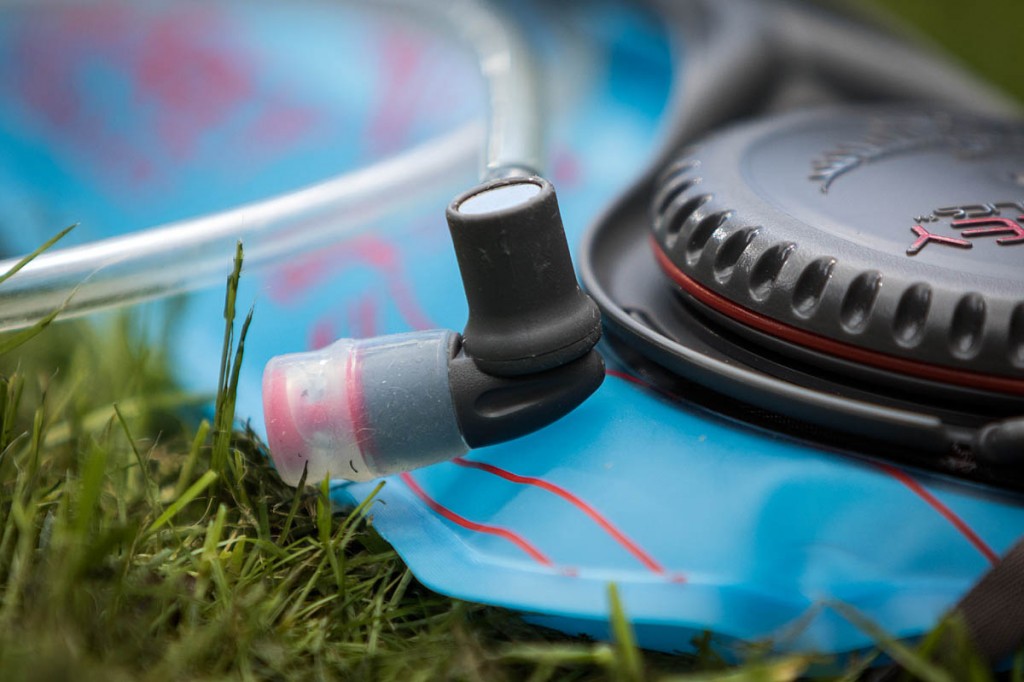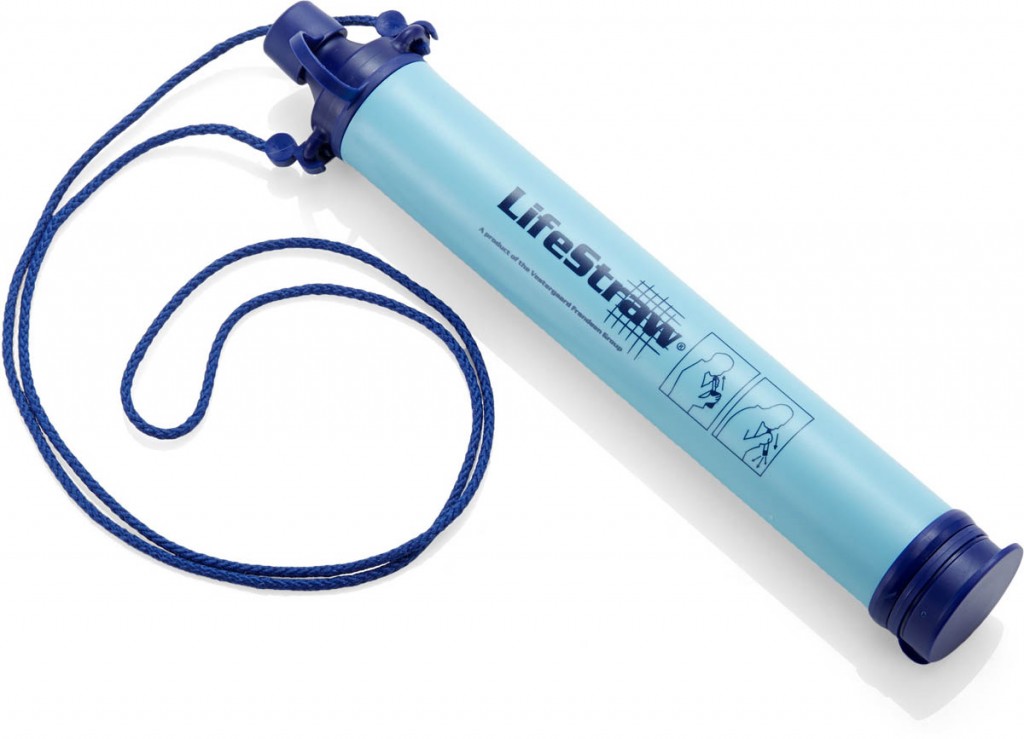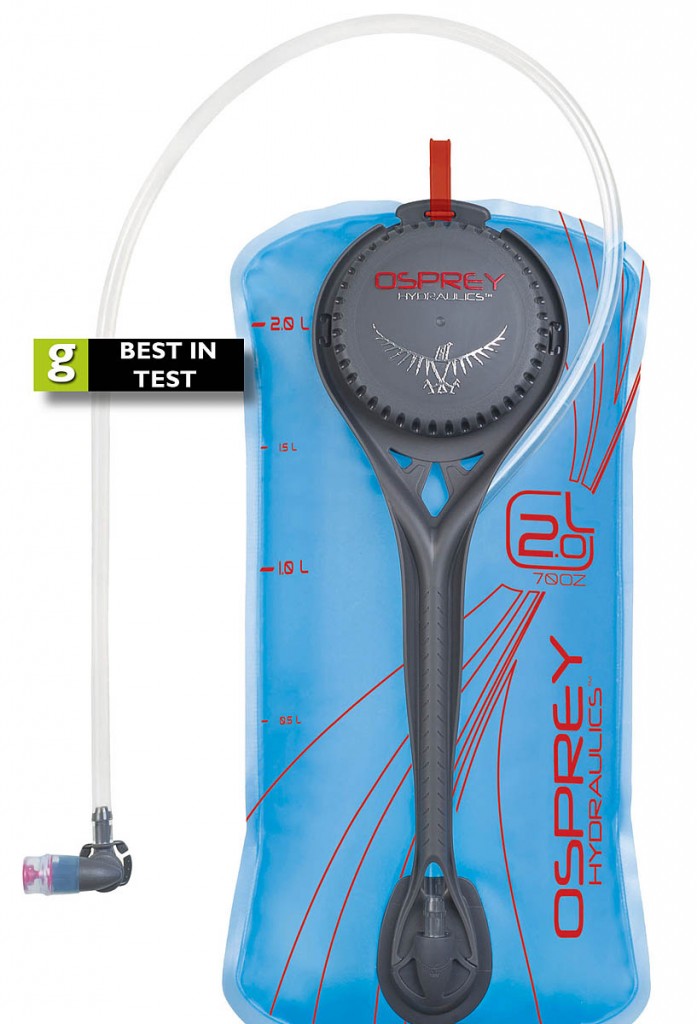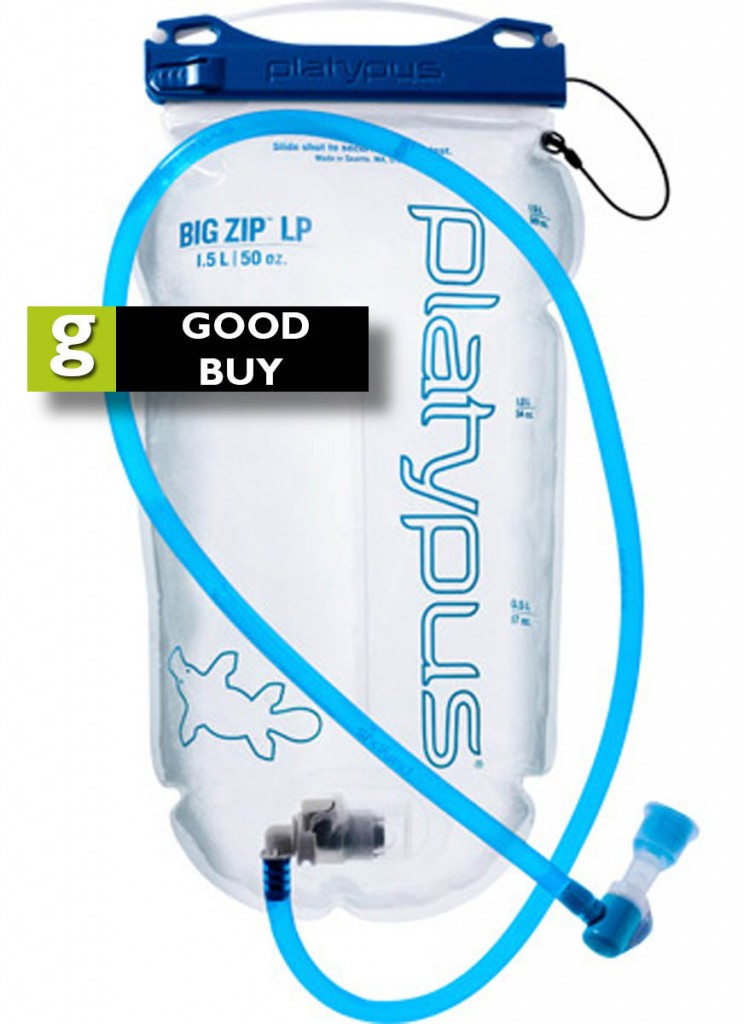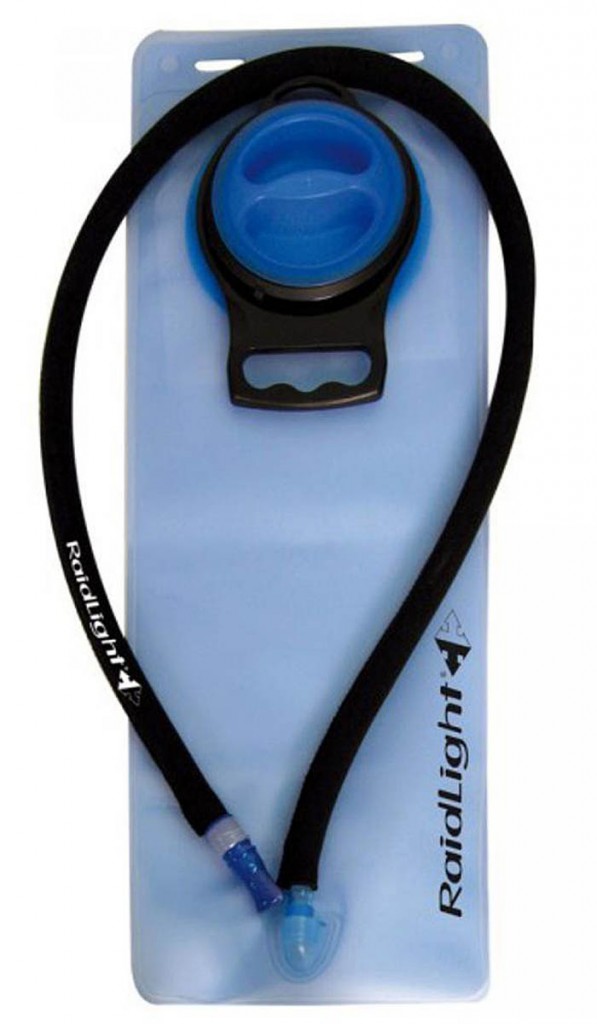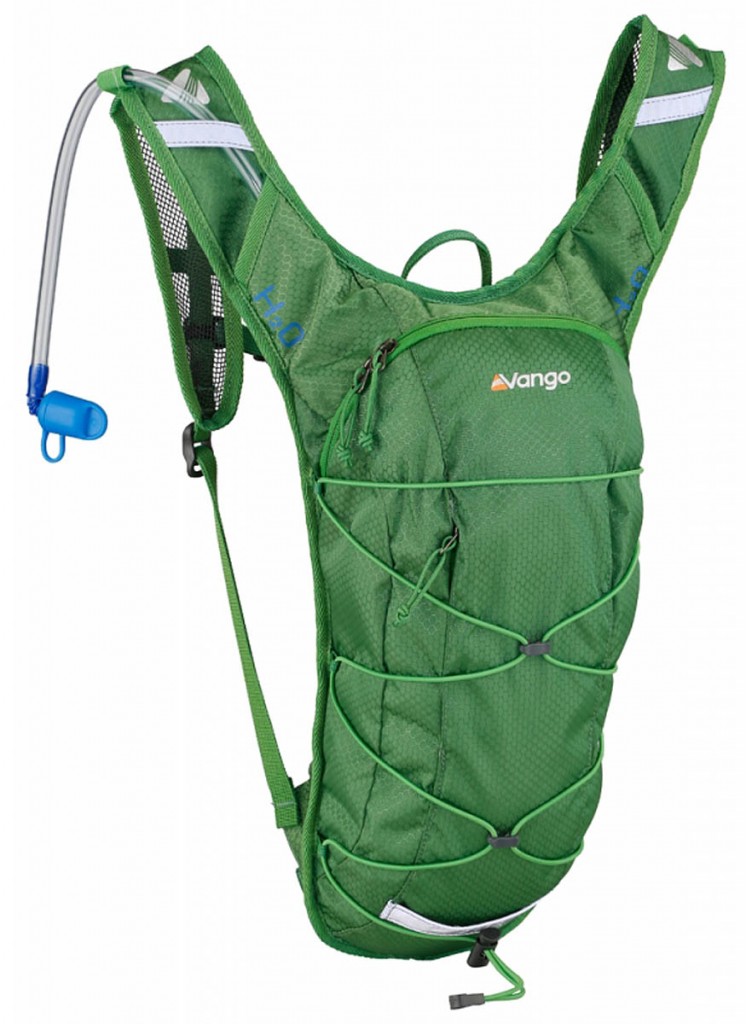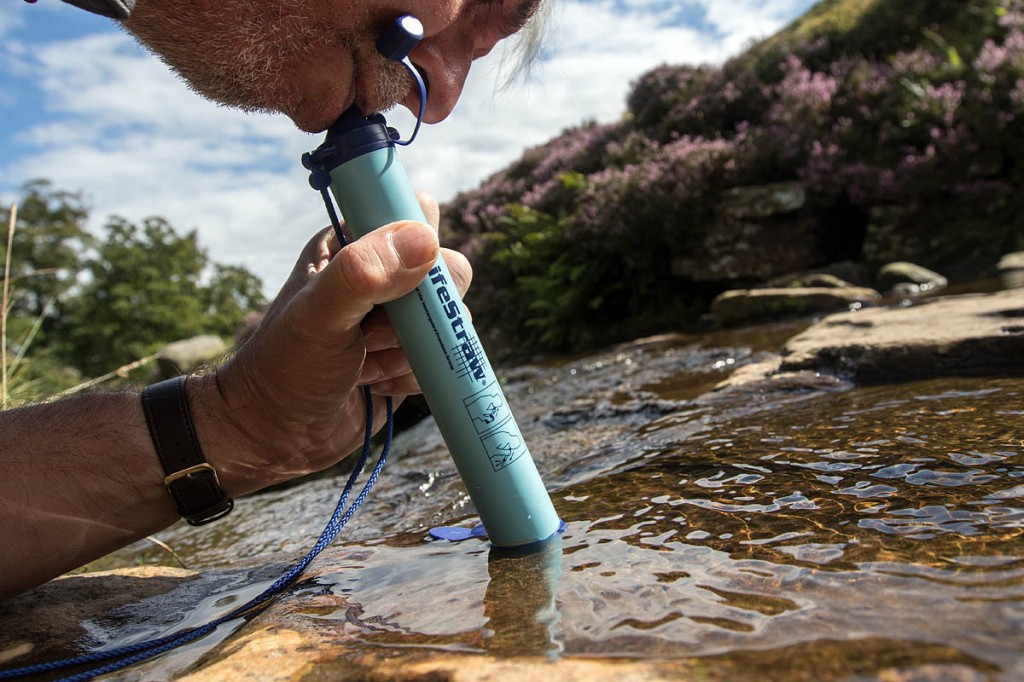Staying properly hydrated while you’re active in the great outdoors is important.
Your performance will suffer if you don’t get enough liquid inside you, and in hot conditions or if you’re tackling strenuous activity, it can even lead to potentially dangerous dehydration.
Of course, you can simply pack a disposable bottle of mineral water or other drink, but it’s not very eco-friendly just to use a plastic bottle once. There are drinks bottles on the market that are reusable, which is a better bet. But if they’re tucked away in a rucksack, the chances are you’ll be less inclined to reach for them than if you have water readily available.
So we put a small selection of hydration systems to the test. All bar one have a bladder which fits in your rucksack with a hose ending with in a bite valve so you can take sips as often as you like on the move, whether you’re walking, running or cycling.
There’s one exception, which is the novel Lifestraw, which takes a very different approach.
We tested how well they performed; how easy they were to use; the quality of their manufacture and design and how they shaped up in terms of value for money.
We also measured them to see if they would take their stated capacity. They did.
Lifestraw Personal
Price: £30
Weight: 50g
Country of manufacture: Korea
Capacity: unlimited
All of the other systems in this test rely on gathering water in a bladder and carrying it with you. The Lifestraw acts differently: it filters found sources of water such as streams or lakes.
Its principle is simple: put the bottom end of the device in the water you want to drink from and suck the top end to draw the liquid through.
The lower end is protected by a large cap, and the top has a cap round its spout. Both are tethered by a plastic retainer.
The Lifestraw takes up little space: it is about 22.5cm long and 2.5cm in diameter, and it weighs only 50g.
The device was originally designed by Swiss company Vestergaard for use in areas where there were humanitarian aid needs. Its makers claim it will remove almost all bacteria and parasites, such as cryptosporidium and giardia.
It will also reduce water’s turbidity, filtering down to 0.2 microns. It does not filter viruses, however. The filter in the Lifestraw will deal with a minimum of 1,000 litres and has a lifetime of five years when stored at room temperature.
The device comes with a removable cord lanyard.
There are two ways of using the Lifestraw: either find somewhere where you can crouch low enough to reach a stream or lake. This inevitably means at least one damp knee. Lifestraw’s publicity shows a man lying on his side while drinking from a stream. Cue wet clothes. Cue even wetter clothes if you don’t take enough care and fall in.
An alternative way to use the Lifestraw is to collect your water in a mug or bottle and then use the straw to drink from it.
Either way, the device is simple to use and worked. Or, put another way, we didn’t get an upset tummy after using it. Lifestraw recommends you blow back into the device after drinking with it, to clear the filter.
This also helps expel most of the water that collects in the Lifestraw, though there will always be some retained. The two caps stopped it escaping, however, though when you remove them subsequently, there will be a drip or two.
The Lifestraw has its limitations, the main one being that you need to find a water source in the outdoors. Usually, in the UK, this won’t be a problem, though you will need to look at your planned route carefully if you want to rely purely on this personal water filter. Many ridge walks and horseshoe routes in the uplands have few streams, though there may be static water sources such as tarns and lochans.
We preferred to take the Lifestraw as a secondary hydration source, making use of water courses as we found them, but with the back-up of carrying some water in a bottle or pack reservoir. However, with careful forward planning you probably could get by just carrying the Lifestraw.
Either way, it’s small and light enough to be a good addition to any outdoor fan’s pack.
It should be noted that, although its recommended price is stated above, we have seen heavy discounting of the Lifestraw, with the item on offer at a major outdoor retail chain for £22 and even cheaper online, which would bump its value for money rating up a notch or two.
Performance 29/40
Ease of use 29/40
Quality 7/10
Value for money 5/10
Total 70/100
Osprey Hydraulics Reservoir 2L
Price: £26
Weight: 284g
Country of manufacture: China
Capacity: 2 litres
Anyone who has tried to stuff a hydration bladder into an already filled rucksack will recognise how difficult it is. So whenever we’re preparing our pack for an outing, the first thing we do is fill our water reservoir and then tuck it into the rucksack’s pouch before loading in the rest of the pack’s contents.
But what if you want to refill it out in the field? You then face either emptying your pack and re-inserting your reservoir, or struggling with a floppy, heavy, piece of gear trying to push it into the confined space.
Osprey, with lots of experience in designing packs, has addressed the problem with its Hydraulics reservoir.
It has a handle running from its top opening cap to the bottom of the reservoir and also has a stiffened back plate which keeps the whole thing rigid rather than flopping around as it is filled with water.
This makes the Osprey reservoir easy to fill via its RapidFill wide cap, and it is much easier to slot into an already filled pack, as well as, obviously, an empty pack. The inner face of the handle has a channel into which the drink tube fits, and it can then be routed either clockwise or anti-clockwise round the circular housing of the filler cap.
It’s important to seat the filler cap properly when closing it, which takes only a half turn of the large, knurled cap. If you cross thread it, it won’t make a proper seal and you’ll get a substantial leak. The cap itself it tethered by a plastic strap. It took us a while to figure that, to stop it flipping back over the opening when you’re trying to fill it, simply flexing it right back will stop that happening.
Filling from a stream on the hill was reasonably easy through the 8cm diameter opening. Finding a little cascade to direct the water into the reservoir is the best bet, rather than simply submerging it.
The Hydraulics reservoir is marked in 0.5l gradations to help you if you don’t want to take on a full load of water.
The tube and bite valve can be replaced and consist of a clear tube with simple-action valve. Turn it in line and it’s closed. We found the best, most compact position was to have the valve turned back up towards the tube. Turn it either way 90 degrees and it is opened, allowing the bite valve to operate and draw water. A good flow was possible in this position.
The bite valve also comes with a two-part magnetic attachment. One bit clips on to your rucksack strap and the valve will then attach itself easily by magnetism. It held the valve quite securely in use.
The Osprey Hydraulics reservoir is made from BPA-free material and has an anti-microbial MPE film, but it did retain its plasticky taste for quite a few fills before it wore off. Osprey said the reservoir will withstand temperatures from freezing to boiling.
The Hydraulics system is a neat solution to an annoying aspect of using flexible reservoirs in your rucksack. There is a pay-off in its relatively high weight, 284g, though of course two litres of water weighs a lot more.
The Hydraulics also comes in a 3 litre version at £28.
Performance 34/40
Ease of use 35/40
Quality 8/10
Value for money 8/10
Total 85/100
Platypus Big Zip LP 1.5L
Price: £30
Weight: 158g
Country of manufacture: Ireland
Capacity: 1.5 litres
The Platypus reservoir is from the Big Zip LP range, which has a wide opening and an internal baffle which limits the bulging of the bladder as it is filled with water, hence the LP for low-profile.
The Big Zip LP has the Slidelock closure. This is a plastic slider which incorporates a handle which can be used to suspend the reservoir using a pack’s built-in loop, or there are two apertures which work with the suspension system in Platypus’s hydration backpacks.
To fill the reservoir, you slide off the handle, which is tethered by a cord so you don’t lose it, and then pull open the two sides of the closure, which are beefier, twin versions of those ziplock strips you find on freezer bags.
Platypus recommends you invert the bladder to make sure the closure is good, but we never found any problem with leaks; it’s quite easy to slide on and make sure the two sides are sealed. It is possible to yank off the handle closure if it gets caught, but the zip will still be closed.
The internal baffle does constrain how much the bladder bulges out, which give it a narrower profile in the rucksack.
The bite valve works well and its closure is simple: rotate the outer collar, with its tab, to the upright position and it opens, and a light bite on the valve allows a good flow of water, the best of any in the test. To close it, just rotate back to its lower position.
A really useful feature of the Platypus is that the drinking tube clips into a valve at the bottom of the reservoir. This means it can be detached completely. So if you need to refill, you can leave the hose in place, routed through the rucksack, while you take the reservoir to fill it. The tube can then be re-attached to the valve and the reservoir slotted back into position.
In fact, we detached the tube each time we filled it, so the hose wasn’t dangling on the ground and the bite valve picking up dirt.
The hose also has a detachable clip which you can use to attach it to your rucksack strap or clothing.
The Slidelock closure doesn’t allow a very wide opening but, because it is the top of the reservoir, inverting it does allow for water to be completely emptied out, unlike those where the opening is on one side of the bladder.
Filling the Big Zip LP from a stream is really a two-handed affair as you need to hold the two sides of the zip open to capture the water easily.
The reservoir is made from BPA-free material and has silver-ion antimicrobial coating. We didn’t detect a significant plastic taste after the initial rinse.
The Platypus Big Zip LP also comes in 2 litre and 3 litre versions, priced £32 and £35 respectively.
Performance 35/40
Ease of use 34/40
Quality 8/10
Value for money 7/10
Total 84/100
Raidlight Never Dry Bladder 1.5l
Price: £26.99
Weight: 218g
Country of manufacture: not stated
Capacity: 1.5 litres
Raidlight specialises in lightweight gear with an eye on the running community, and the Never Dry Bladder tips the scales towards the lower end of our test samples.
The main body is a conventional, floppy, reservoir with a large screw-lid opening with a fairly deep thread that fully tightens in a little less than a three-quarter turn.
The lid is tethered by a plastic link. You need to hold the Never Dry upright when filling to stop the lid flopping back over the opening.
The lid unit has a large plastic handle that enables easy filling of the bladder; the top side of the housing has a rigid plastic loop built in that can be used to suspend the reservoir using a backpack’s single hanging strap, and the bladder itself has twin apertures for use with packs that have double hangers.
The 1.5 litre model is quite compact and will fit in small packs that a trail- or ultrarunner might carry. The drinking tube can be unscrewed from its housing at the bottom of the bladder, but there is no valve so this can only done when the unit is empty, but it does help when flushing out the hose.
The drinks tube also has an outer insulating sleeve to help prevent icing in cold conditions.
The bite valve is a good design: pull the valve to open and push it to close. A reasonable flow was possible with practice from the soft-feeling bite section. The Raidlight bladder did retain its plastic taste for quite a few fillings.
The Never Dry Bladder could be filled from a stream single handed as long as you hold it roughly vertical so the lid hangs out of the way.
The reservoir is designed to fit all the Raidlight packs, but we found no problem using it with our other brand rucksacks.
It is also available in a 2.5 litre version at £29.99.
Performance 33/40
Ease of use 31/40
Quality 7/10
Value for money 6/10
Total 77/100
Vango Sprint 7
Price: £30.00
Weight: 418g (including backpack) 138g reservoir only
Country of manufacture: China
Capacity: 2 litres
Vango plays to its strengths with the Sprint 7 by providing not just a hydration reservoir but also a compact backpack for a very reasonable price.
It includes the Hydrant 2L bladder, which can be bought separately for £15.
The Sprint 7 pack is a compact little 7 litre rucksack, with a compartment big enough to stuff a waterproof and one or two other essentials. It also has an extra small pocket within, big enough to take your mobile phone or a GPS receiver.
The hydration bladder goes in a separate compartment with hanging loop and the tube can then be routed either left or right out to the shoulder straps, which have loops to feed the hose through.
The shoulder straps are lightweight mesh, wide but with no padding. This is not a pack to stuff with anything heavy: you’ll have 2kg of water to support if you fill the reservoir, so the Sprint 7 is not designed to carry much extra weight. The pack does have a webbing waist belt and sternum strap, the former of which can be easily detached using large fold-over Velcro tabs.
The front of the pack has an exterior small zipped pocket with a key clip and there is a shockcord bungee along the front to stash extra gear. There are reflective details on the harness and front of the pack.
The AirMesh back is a soft honeycomb foam and the whole pack is made from 420D polyester which feels tough for its weight.
The Hydrant 2L reservoir that comes with the pack is a fairly long 2 litre bladder. It has a top opening that is good and wide to enable rapid filling, though you need two hands to do this from a stream.
The top is then folded over once and the sliding closure slips on, in a slightly fiddly fashion, to seal the unit. It’s not tethered, so make sure you don’t put it down somewhere it’s going to get swept away or you’ll have an unusable reservoir.
The bladder has markings in half litres or, for those of a nostalgic bent, in units of four fluid ounces.
The bite valve comes with a tethered plastic cover to keep it clean – nice touch for which you’ll pay extra with some systems – though it does look a little bulky. The bite valve itself is a little fiddly: you bite to open it then bite again to close, though it feels a bit clicky and doesn’t always work first time.
The whole tube can be unscrewed from the bladder, but there is no valve, so it must be empty before doing so.
Useable liquid temperatures are -20c to 50C. The Hydrant reservoir didn’t taste plasticky after its initial rinse.
The Vango Sprint 7 represents typical Vango value, though some of the bladder’s features are a little fiddly.
Performance 32/40
Ease of use 27/40
Quality 6/10
Value for money 9/10
Total 74/100
Best in test: Osprey Hydraulics Reservoir 2L
Recommended: Platypus Big Zip LP 1.5L
The Osprey was the best performing hydration system in our test, just pipping the Platypus model. Osprey’s Hydraulics reservoir is well designed and recognises some of the shortcomings of conventional bladders, going some way to mitigating these, and a reasonable price.
Platypus’s Big Zip LP range also tackles the annoyance of a bulging, bulbous bladder not easily fitting into packs, but it is pricier.
We liked the concept of the Lifestraw, but we would prefer to carry it as a secondary system rather than the only one, though with careful planning, it could provide a minimalist approach to keeping hydrated, especially if you want to keep pack weight to a minimum as you’re not carrying a large volume of water with you, which is often one of the heaviest items in a rucksack.
At its full price, the Lifestraw is not cheap, but if you can find it discounted, it makes a good addition to a walker’s pack, especially if your planned route means you’ll be passing water sources.
All the items in the test were supplied to grough by the brands.
